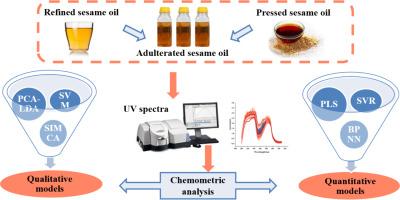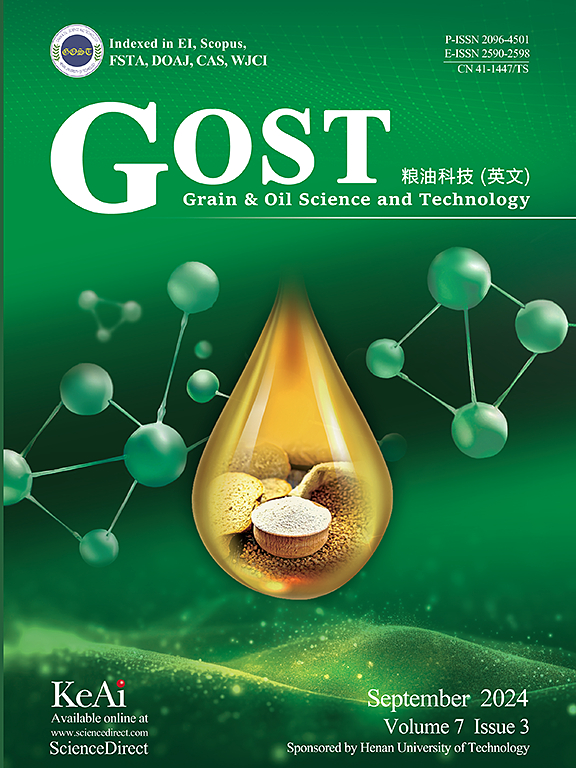Discrimination of pressed sesame oil: A comparison study of non-targeted UV spectral fingerprints combined with different chemometric methods
Q2 Agricultural and Biological Sciences
引用次数: 0
Abstract
This study explores the utilization of various chemometric analytical methods for determining the quality of pressed sesame oil with different adulteration levels of refined sesame oil using UV spectral fingerprints. The goal of this study was to provide a reliable tool for assessing the quality of sesame oil. The UV spectra of 51 samples of pressed sesame oil and 420 adulterated samples with refined sesame oil were measured in the range of 200-330 nm. Various classification and prediction methods, including linear discrimination analysis (LDA), support vector machines (SVM), soft independent modeling of class analogy (SIMCA), partial least squares regression (PLSR), support vector machine regression (SVR), and back-propagation neural network (BPNN), were employed to analyze the UV spectral data of pressed sesame oil and adulterated sesame oil. The results indicated that SVM outperformed the other classification methods in qualitatively identifying adulterated sesame oil, achieving an accuracy of 96.15%, a sensitivity of 97.87%, and a specificity of 80%. For quantitative analysis, BPNN yielded the best prediction results, with an R2 value of 0.99, RMSEP of 2.34%, and RPD value of 10.60 (LOD of 8.60% and LOQ of 28.67%). Overall, the developed models exhibited significant potential for rapidly identifying and predicting the quality of sesame oil.

压榨芝麻油鉴别:不同化学计量方法结合非靶向紫外光谱指纹图谱的比较研究
本研究探讨了利用各种化学计量分析方法,利用紫外光谱指纹图谱测定精制麻油中不同掺假水平的压榨麻油的质量。本研究的目的是为芝麻油品质的评估提供一个可靠的工具。测定了51份压榨芝麻油样品和420份掺假精制芝麻油样品在200 ~ 330 nm范围内的紫外光谱。采用线性判别分析(LDA)、支持向量机(SVM)、类类比软独立建模(SIMCA)、偏最小二乘回归(PLSR)、支持向量机回归(SVR)和反向传播神经网络(BPNN)等分类预测方法,对压榨芝麻油和掺假芝麻油的紫外光谱数据进行了分析。结果表明,SVM在定性识别掺假香油方面优于其他分类方法,准确率为96.15%,灵敏度为97.87%,特异性为80%。在定量分析中,BPNN的预测效果最好,R2为0.99,RMSEP为2.34%,RPD为10.60 (LOD为8.60%,LOQ为28.67%)。总体而言,所开发的模型在快速识别和预测香油质量方面具有显著的潜力。
本文章由计算机程序翻译,如有差异,请以英文原文为准。
求助全文
约1分钟内获得全文
求助全文
来源期刊

Grain Oil Science and Technology
Food Science
CiteScore
7.30
自引率
0.00%
发文量
69
审稿时长
12 weeks
期刊介绍:
 求助内容:
求助内容: 应助结果提醒方式:
应助结果提醒方式:


